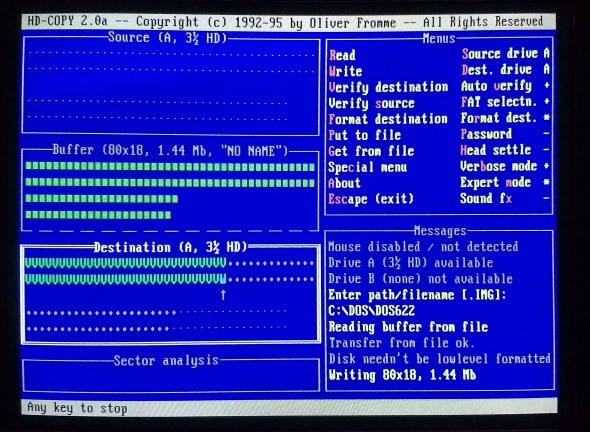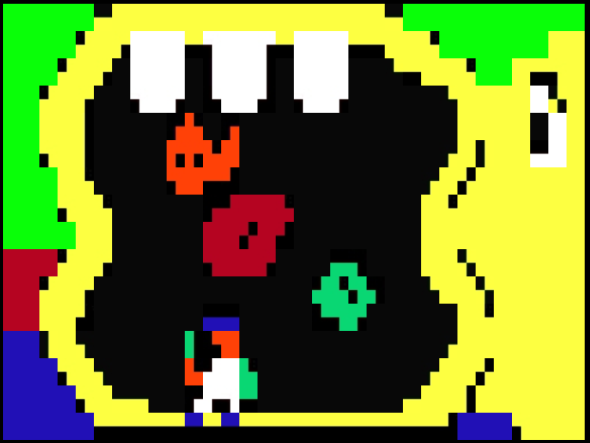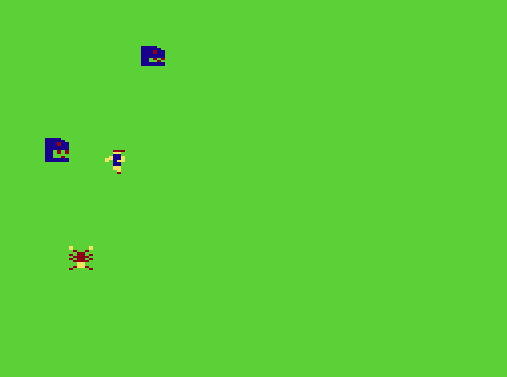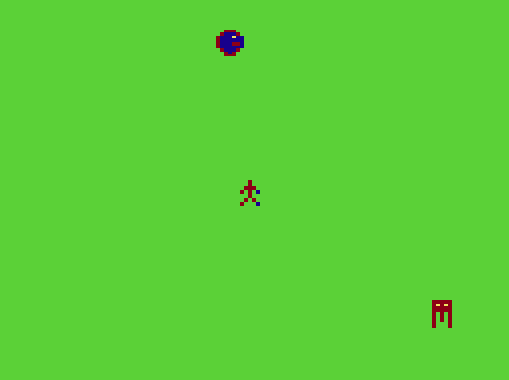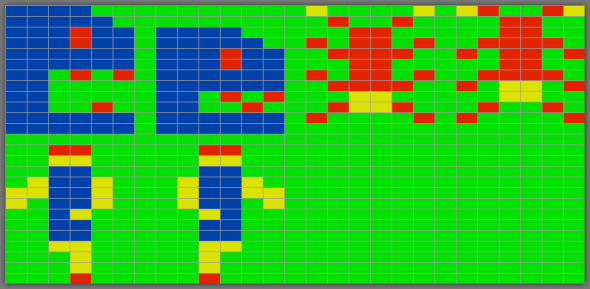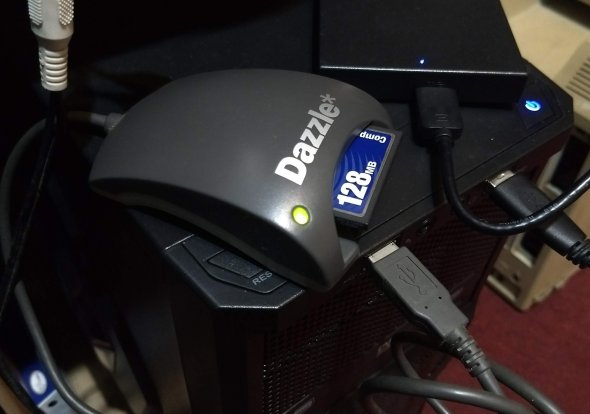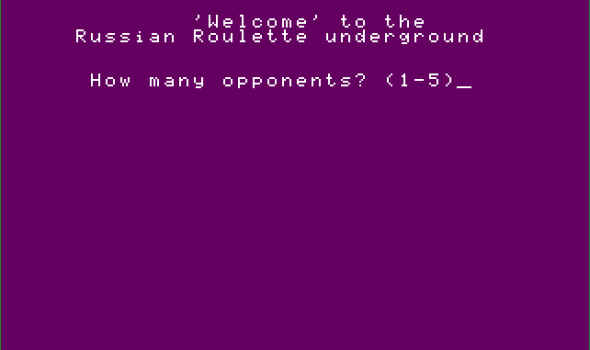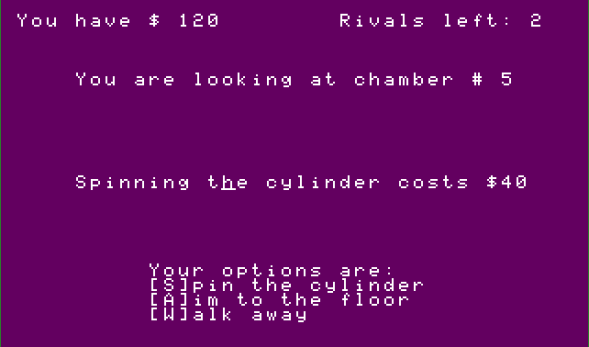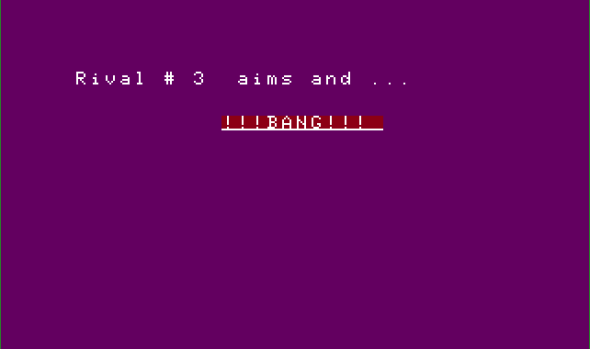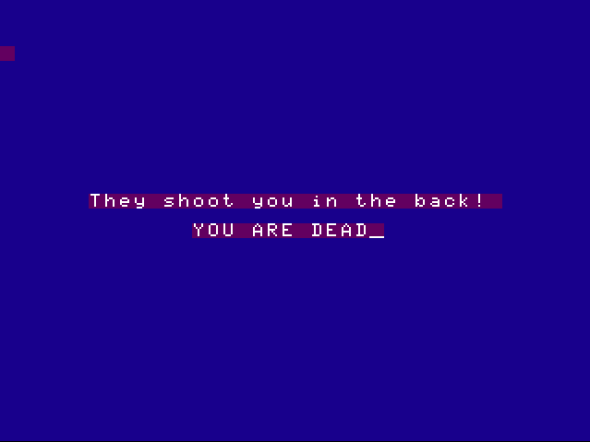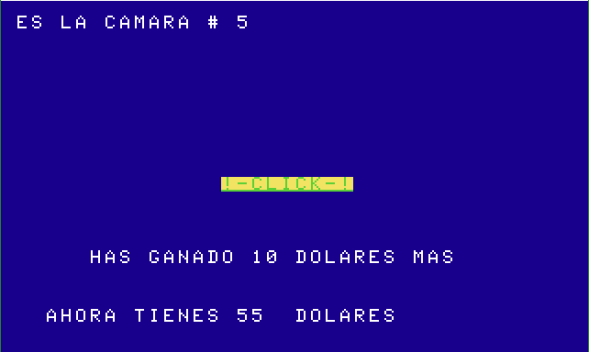Looks like I could say “It is finished¨. Of course, anyone who ever wrote a computer program knows that you are never finished, but, at least I can say that “Russian Roulette” has been properly “Remixed”.
As I mentioned before, there were only 2 tasks left. I tackled the sound first, and even when the results are not great – there is no way to generate noise from BASIC in the CoCo – I think that they are at least acceptable.
For the “Bang” sound, I changed the original PLAY”V30O2L32CF”, just 2 notes in the 2nd low octave, to V30O1L254T254ACDEFAV20ACDBV10FACD. That is 14 notes in the lowest octave, as short as possible, arranged in a somewhat random fashion to simulate noise. There is also a slight “fade-out” effect by changing the volume from V30 to V20 and finally to V10 while playing.
The “Click” went from PLAY”O5L64;12″ – a single high pitched note – to O5L96T4BABB. Not a great deal, but at least a bit better.
In the original, the sounds will only be played in one place in the code. But as I added computer “players” that can also Click and Bang, I used an alphanumeric variable to store the PLAY string, to save me from typing the whole Bang sound twice.
For the ending, I wanted to do something a little bit fancy, but without going crazy.
I thought about changing the color assigned to the palette entry for the background to do a kind of “fade out” effect, but in the end I went for a kind of wipe-out.
Using 2 FOR/NEXT loops to print spaces with a different background color than the one already on the screen was very simple, and I went to use 2 PRINT statements. One would go from top left to halfway down, and the other from bottom right to halfway up.
But something was not working. For whatever reason, I’ve always ended up with a space in the original background color on the top left.
Eventually, I realized that, regardless of what was PRINTed on the screen, an extra character with the cursor would be placed right after it. Therefore, when I was printing in the bottom right corner (39,23), that extra character would print in the next line, causing the whole text screen to scroll up. This, in turn moved the 2nd top line up (still in the original background color), and caused that “leftover” character.
Since the computer was actually printing 2 characters for each PRINT command, and I should not print on the last position, I changed the loop that tracks the horizontal position to use STEP 2, and to go only up to 38, ending up with this:
510 FOR V=0 TO 11:FOR X=0 TO 38 STEP 2:LOCATE 39-X,23-V:ATTR 0,0:PRINT” “;:LOCATE X,V:PRINT” “;:NEXT X,V
And finally, the simple trick of printing one character at a time for the final message.
520 LOCATE 6,10:FORX=1 TO 25:PRINTMID$(“You are the last survivor”,X,1);:FORL=1 TO 30:NEXT L,X
The reason I did not use the palette fading effect was that I thought to use it for the “death” screen.
In the original, I switched one of the low res screens, set a blue background, and then painted it red from top to bottom by drawing lines.
1130 WIDTH 32:PMODE 1,1:SCREEN 1,0:PCLS 3
1135 COLOR 4
1140 FOR A=0 TO 192 STEP 2:LINE(0,A)-(256,A),PSET
1150 NEXT
I guess I was trying to do something like a veil of blood falling over the player’s eyes…
Looking for colors that would work for a fade from the magenta background to red, I realized that there were not really too many. By changing the default background to a darker shade, I was able to get another one, which is kind of enough for the effect to work.
340 FOR A=1 TO 5:READ P:PALETTE 6,P:FOR W=1 TO 100:NEXTW,A
350 DATA 9,8,7,6,5
Well, that’s it. A second game remixed. I leave you with some screenshots and the listings for both, the original and remixed versions.
This slideshow requires JavaScript.
Ooooppsss! I just figured something out. More than a few times, when it’s the player’s turn, the game will just react as if a key had been pressed, and move on. This seems to be because any key pressed after the INKEY$ is stored in a buffer, and goes is used later. Adding an extra, bogus INKEY$ seems to have taken care of this.
90 A$=INKEY$
95 A$=INKEY$:IF A$=”” GOTO 95
